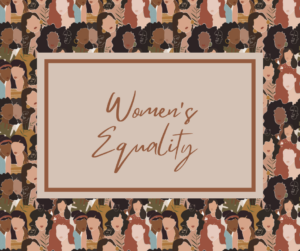Every August 26th, we commemorate Women’s Equality Day in the United States, a celebration of the ratification of the 19th amendment which federally protects women’s right to vote. While we celebrate this milestone, it’s still important to acknowledge that this freedom was not shared by all women until many decades later, as racial discrimination and harassment continued at the ballot . (1) The work of ensuring equality for all people is never finished, and while we should take time to honor achievements of the past, we must continue to keep our eyes on the prize.
This is particularly true in the workplace. We exist in an ever-changing landscape with shifting priorities and terminology. Recently, the Society for Human Resource Management (SHRM), the leading non-profit advocacy organization for human resource professionals, scaled back their focus on equity by removing the “E” from their previously named Inclusion, Equity, and Diversity (IE&D) focal . (2) In their statement, they framed workplace debates on equity as a distraction from core I&D work. For SHRM, equity will fold under inclusion, which remains their primary focus.
At first glance, the mixed comments in response to SHRM’s LinkedIn post seem to demonstrate the divided thinking within the DEI space. But many experts in the field have spoken out against the change, positioning it as a regression. Scholars Enrica Ruggs and Oscar Holmes IV lay out a strong case in their recent Harvard Business Review article, providing a concise definition of workplace equity: “equity is about changing structures, policies, and processes to give marginalized employees the same opportunities and access to resources that their peers from advantaged groups get.” (3) This lens demonstrates the breadth and depth of work under the aspiration of equity itself, something too immense to fold under the banner of inclusion. It seems the broader DEI community agrees. Recent data suggests most companies plan to invest more in DEI initiatives, with one study reporting nearly 75% of polled business planned enhancements in the next two years. (4) All of this leaves many to ask, how can we effect change in the workplace when it feels like two steps forward, one step back?

Milestones like Women’s Equality Day allow us to revisit history and reap lessons from the trailblazers whose shoulders we stand upon. The first celebration of Women’s Equality Day in 1971 came as a result of the 1970 Nationwide Women’s Strike for Equality, centralized in a New York City rally sponsored by the National Organization for Women (NOW). The march, spearheaded by iconic American feminist writer and activist Betty Friedan, brought together more than 50,000 people, exceeding all expectations. The strike pulled women from their homes, from workplaces, from society, proving they are a force to be reckoned with, chanting “Don’t iron while the strike is hot!” Women prove time and again that they have the collective power to reshape cultural institutions.
We see this in our workplaces when women stand up and speak out about pay disparities, harassment, and inequitable expectations. We feel this when women share their experiences with one another or bravely open up during focus groups, roundtables, all-staff surveys, and other mechanisms for gathering workplace feedback. We know this when women achieve success for themselves, and they reach back to bring mentees and others along with them in their path to success.
Women’s Equality Day, let us celebrate the success of the 19th Amendment, but let us also celebrate the successes, big and small, of every woman in the workplace who makes life a little easier for herself and others. Let us push back against the voices that undermine progress. Let us continue the hard work of transforming workplaces for the better to ensure all people feel comfortable, valued, and respected in their contributions.
Citations
- Waxman, O. B. (2020, August 17). ‘It’s a Struggle They Will Wage Alone.’ How Black Women Won the Right to Vote. TIME. https://time.com/5876456/black-women-right-to-vote/
- Society for Human Resource Management. (2024, July 9). LinkedIn post, https://www.linkedin.com/posts/shrm_shrm24-inclusionanddiversity-workplacechange-activity-7216474717606608900-gU-H
- Ruggs, E. N. and Holmes IV, O. (2024, August 6). Why dropping the e in DEI is a mistake. Harvard Business Review. https://hbr.org/2024/08/why-dropping-the-e-in-dei-is-a-mistake
- Hood, D. (2024, June 3). Companies Quietly Ramp Up DEI Efforts Amid Political Turmoil. Bloomberg Law. https://news.bloomberglaw.com/esg/companies-quietly-ramp-up-dei-efforts-amid-political-turmoil
